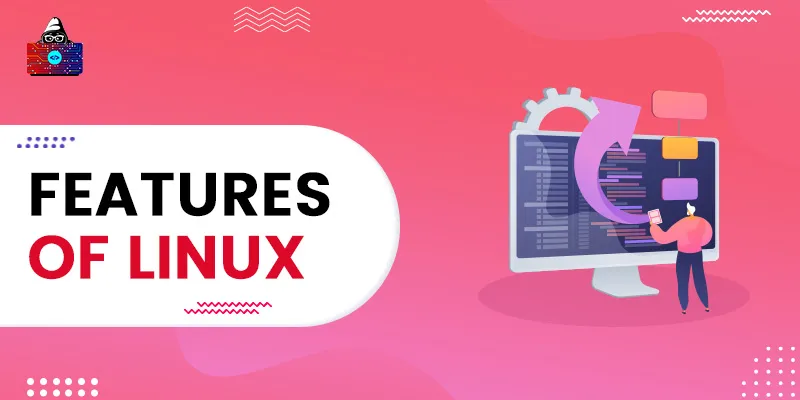Linux is undoubtedly the most widely used Kernel for development and server management purpose. According to a study, more than 80% of the developers say that their primary Operating System Kernel for development is Linux. What makes Linux so useful?
Let’s discuss the features of Linux that are making this kernel rule the development world today.
What is Linux?
Linux is the operating system kernel upon which other operating systems are built. Because the Linux kernel is open-source, anybody may use it, alter it, and even sell derivative work.
The Linux kernel also serves as the foundation for the Android operating system. Linux is the favorite Kernel of developers due to the efficient and helpful features it has. These features give full support to the developers for developing all kinds of applications.
Features of Linux
1. Free and Open Source
The Linux kernel source code is available on GitHub, where you may download, examine, and even edit it locally. This is really useful since there may be a huge number of innovative ideas that may be included in the source codes. Because users may post issues on GitHub, which contributors can quickly fix, open source also assists in the timely resolution of defects. Every student has the opportunity to analyze the source code of the operating system and grasp the efficient algorithms hidden underneath the hood.
2. Namespaces
This is one of the most useful features of Linux for developers. Namespaces isolate multiple processes and assign separate computational resources to each of them. Separate namespaces have separate process trees. This is helpful in the containerization of applications as the container is not affected by any other process.
3. Multitasking
Multitasking enables Linux to handle multiple processes simultaneously. With multitasking, a process may even get removed from the processor to allow some other process to run and again come back to its state from where it left. This process is known as Context Switching.
4. Privacy and Security
It safeguards our data against illegal access. Without authorization, a user cannot access the resources of another user. This feature enables several users to operate on the same workstation without interfering with the work of other users.
5. Shell scripting and automation
You may communicate with Linux by using shell scripting. To decrease human labor, we may use the shell to build automation scripts. For example, you might create an automated script to backup your data every day at 2 p.m.
6. Customization
You can change the keyboard and other interaction options to match your favorite language or other settings.
7. Networking Support
It has built-in networking support to test and configure various networking services. For instance, you may use the “ping” command to test the activity of a remote machine.
8. Frequent updates
Because Linux is an open-source operating system, we see regular upgrades that ensure your resources are safe and bug-free.
Conclusion
This article addressed the basics of Linux and its most significant features that let developers create large-scale applications. We discovered that Linux provides crucial characteristics such as security, process management, customization, and automation that are beneficial at every step of development.
People are also reading:





Leave a Comment on this Post